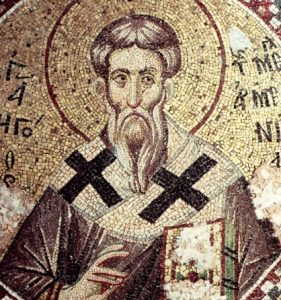 Via San Gregorio Armeno in Napoli is a 2500 year old road that connects Spaccanapoli to Piazza San Gaetano, the ancient Greek Agora’. It is a road always connected with the oriental religious world. It is a place that has seen the succession of different cults and beliefs, from the practice of the cult of Demeter, in the Greek period, up to the veneration of saints, with the advent of the Christianity and is, still today, surrounded by an aura of magic and mysticism. Called, in the fifth century, Strada Nostriana, in honor of San Nostriano, it became, in the eighth century, San Gregorio Armeno, who is Saint Gregory the Illuminator, or San Liguoro, another name attributed by the Neapolitans to the Saint. At that time Napoli was a Byzantine duchy. In Byzantium, Emperor Leone III began his reform of Christian worship with the destruction and elimination of sacred icons. The iconoclastic struggle put to flight thousands of Basilians and Orthodox who fled from the East to the southern regions of Italy.
Via San Gregorio Armeno in Napoli is a 2500 year old road that connects Spaccanapoli to Piazza San Gaetano, the ancient Greek Agora’. It is a road always connected with the oriental religious world. It is a place that has seen the succession of different cults and beliefs, from the practice of the cult of Demeter, in the Greek period, up to the veneration of saints, with the advent of the Christianity and is, still today, surrounded by an aura of magic and mysticism. Called, in the fifth century, Strada Nostriana, in honor of San Nostriano, it became, in the eighth century, San Gregorio Armeno, who is Saint Gregory the Illuminator, or San Liguoro, another name attributed by the Neapolitans to the Saint. At that time Napoli was a Byzantine duchy. In Byzantium, Emperor Leone III began his reform of Christian worship with the destruction and elimination of sacred icons. The iconoclastic struggle put to flight thousands of Basilians and Orthodox who fled from the East to the southern regions of Italy.
Among those who escaped there were the Basilian nuns of Santa Patrizia, guardians of the relics of San Gregorio Illuminatore (Saint Gregory the Illuminator), patron saint of Armenia, the one who converted Armenia to Christianity around 301. His skull was taken to the church dedicated to him, in Napoli, and is still kept today in the silver reliquary specially made thanks to Abbess Anna Maria Ruffo. San Gregorio was born around 260. He belonged to the royal dynasty of the Arsacids. His father, Anak, was a noble Parthus and he killed the Armenian king Kosrow II. For this reason, his family was forced to flee and take refuge in Cappadocia. Religious education was transmitted to Gregorio by Euthalius, a nobleman who converted to Christianity. After marrying Mariam, daughter of a nobleman from Armenia Minor, with whom he had two sons Vrtanes and Aristakes, Gregorio decided to introduce the Christian religion in his hometown.
Ordained a priest in Caesarea, he entered the retinue of the prince of Armenia, Tiridates III, son of Kosrow II who had been murdered by his father.
Tiridates III was in exile but, in 297, after the victorious campaign of Galerius against the Persians in which he too had participated, he was reinstated on the Armenian throne by the emperor Diocletian. During the celebrations of his return, in a solemn ceremony the Armenian king wanted to offer incense to the goddess Anahita, but Gregorio refused to sacrifice to the pagan gods and so he was tortured and imprisoned from 298 to 313.
After years of persecution of Christians Tridate III fell ill and no doctor could cure him. It is said that, following a dream of his sister, the king allowed the Christian preacher to leave prison to cure him. Gregory miraculously managed to heal him so Tridate III converted and the nation became Christian. San Gregorio died in 328. His remains are kept in several places. The skull is found in Napoli in the church which was consecrated in 1579 and named after the saint the following year. Other relics are in Nardò (Puglia) and still others in Constantinople. The left hand of the Saint is kept in Sis and the right hand is in Etchmiadzin, Armenia and is still used today to bless the new Katholikos.
San Gregorio was the author of thirty disciplinary and moral canons added to the Armenian drafting of the codes of the Council of Nicaea. He is honored as the founder and patron saint of the Armenian Apostolic Church and is celebrated by Armenians every year on June 9th.
In Napoli, the church of San Gregorio Armeno stands on the ruins of the temple of Demetra (Ceres for Romans) where also lies Santa Patrizia, a Byzantine nun and descendant of Constantine, who together with San Gennaro and other saints is the co-patron of Napoli.
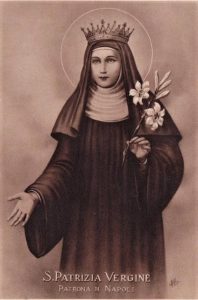 Very little is known about the life of Saint Patrizia. What we know was written by a priest who celebrated the Holy Mass for the nuns companions of the saint. It seems that Patrizia lived between 668 and 685 and that was the granddaughter of the Emperor Constantine. She fled to Napoli with her nurse, Aglai, and some eunuchs, to avoid the royal wedding. She visited the Monastery of Santi Nicandro e Marciano, in Caponapoli, the place she chose for her burial. In Rome she received the virginal veil from Pope Liberius and the permission to found her own order, the order of the Patriziane. Ascertained of the death of her father, she returned to her homeland. Subsequently, after a trip to Palestine, she landed again in Napoli and, welcomed at the Castel dell’Ovo, there she would have ended her days, rescued by the Basilian monks. The cult of the saint in Napoli was so strong that it surpassed the memory of Saints Nicandro and Marciano so much that the Church and the street took her name. When in 1808 the monastery where she had lived was suppressed, the nuns who followed her first moved to via Tribunali, then, in 1864, they joined the nuns of San Gregorio Armeno, bringing with them the body and blood of Saint Patrizia.
Very little is known about the life of Saint Patrizia. What we know was written by a priest who celebrated the Holy Mass for the nuns companions of the saint. It seems that Patrizia lived between 668 and 685 and that was the granddaughter of the Emperor Constantine. She fled to Napoli with her nurse, Aglai, and some eunuchs, to avoid the royal wedding. She visited the Monastery of Santi Nicandro e Marciano, in Caponapoli, the place she chose for her burial. In Rome she received the virginal veil from Pope Liberius and the permission to found her own order, the order of the Patriziane. Ascertained of the death of her father, she returned to her homeland. Subsequently, after a trip to Palestine, she landed again in Napoli and, welcomed at the Castel dell’Ovo, there she would have ended her days, rescued by the Basilian monks. The cult of the saint in Napoli was so strong that it surpassed the memory of Saints Nicandro and Marciano so much that the Church and the street took her name. When in 1808 the monastery where she had lived was suppressed, the nuns who followed her first moved to via Tribunali, then, in 1864, they joined the nuns of San Gregorio Armeno, bringing with them the body and blood of Saint Patrizia.
In 1625 the saint was declared co-patron of Napoli and the silver statue of her was placed, on 6 April 1642, in the Chapel of the Treasure of S. Gennaro. Santa Patrizia is still much venerated in Napoli. Above all, she is considered protector of girls looking for a husband, protector of pregnant women, sailors and of all the needy. Her blood melts, as the blood of San Gennaro does. But the miracle of the saint takes place on August 25th, which is the day of her death, and the day on which she is celebrated.
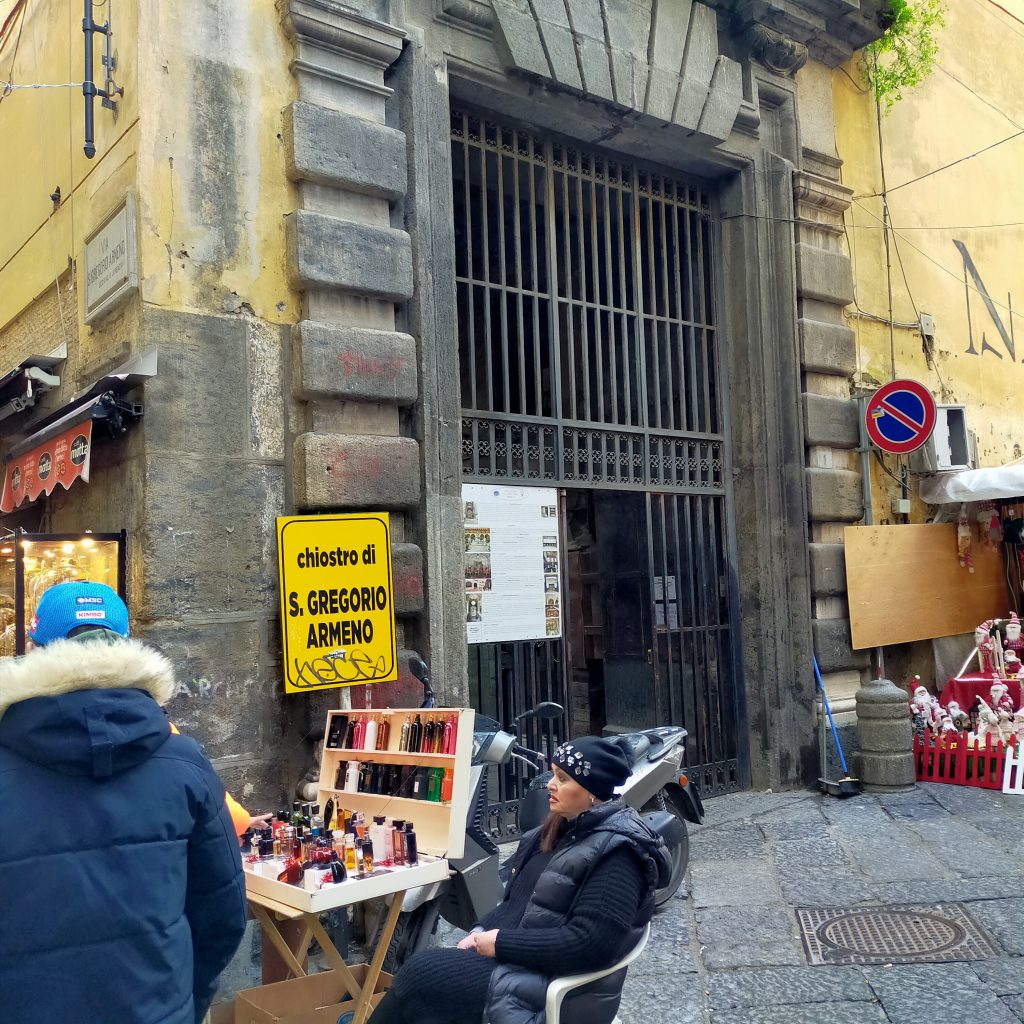
Going back to the street of San Gregorio Armeno, it is also known as the street of the presepi (cribs/nativity scenes) and is a display of art and tradition, always very crowded. During the ancient times, in the city of Neapolis there was a temple dedicated to Demeter, goddess of agriculture, death and rebirth. The divinity of the Eleusinian Mysteries is closely linked to the birth of the city of Napoli.
The bas-reliefs discovered, one in San Gregorio Armeno and the other near Piazza San Gaetano, are proof of this. They are also the testimony of the importance attributed to the woman in the Greek-Roman Neapolis, therefore with regard to the emancipation of the woman it was a highly avant-garde city.
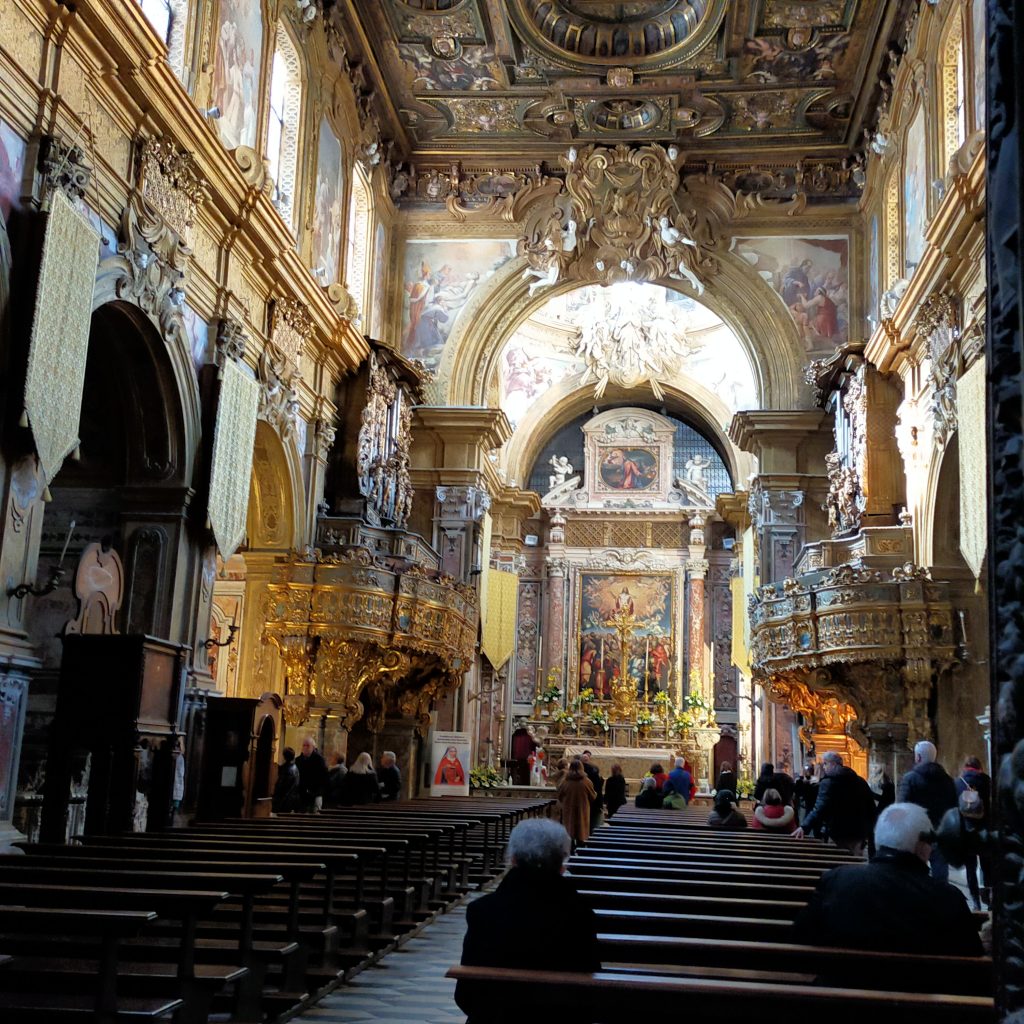
In that time, to pay homage to the goddess, the citizens donated statuettes to the temple, for this reason the street was full of artisans’ shops that made terracotta votive statuettes.
It is a nice coincidence that right where the temple to Demeter once stood, there is now a church where lies Santa Patrizia, the patron saint of single girls, good marriage and pregnant women.
Throughout the year, the shops at via San Gregorio Armeno are full of handmade objects and statuettes by skilled craftsmen who hand down the art from father to son. They are small masterpieces that represent nativity scenes, everyday scenes, mini villages, characters belonging to the presepe (crib) tradition and current characters shown in their characteristics, with every detail. Starting from the statuettes of Virgin Mary, St. Joseph and the baby Jesus it goes to the footballers and political and showbiz personalities. And then, lucky horns and horseshoes; hunchbacks and horns against bad luck. The street is imbued with colors and magic throughout the year. A paradise for children and for those who love art. There is something for everyone and for all prices from one euro to over a thousand! There are pastori (statuettes) made with terracotta or wooden face, hands and feet which are then applied to a mannequin made with wire and covered with hemp tow. And there are others entirely modeled in terracotta. All hand painted. San Gregorio Armeno is itself a crib which, and as tradition dictates, it represents the sacred and the profane together!
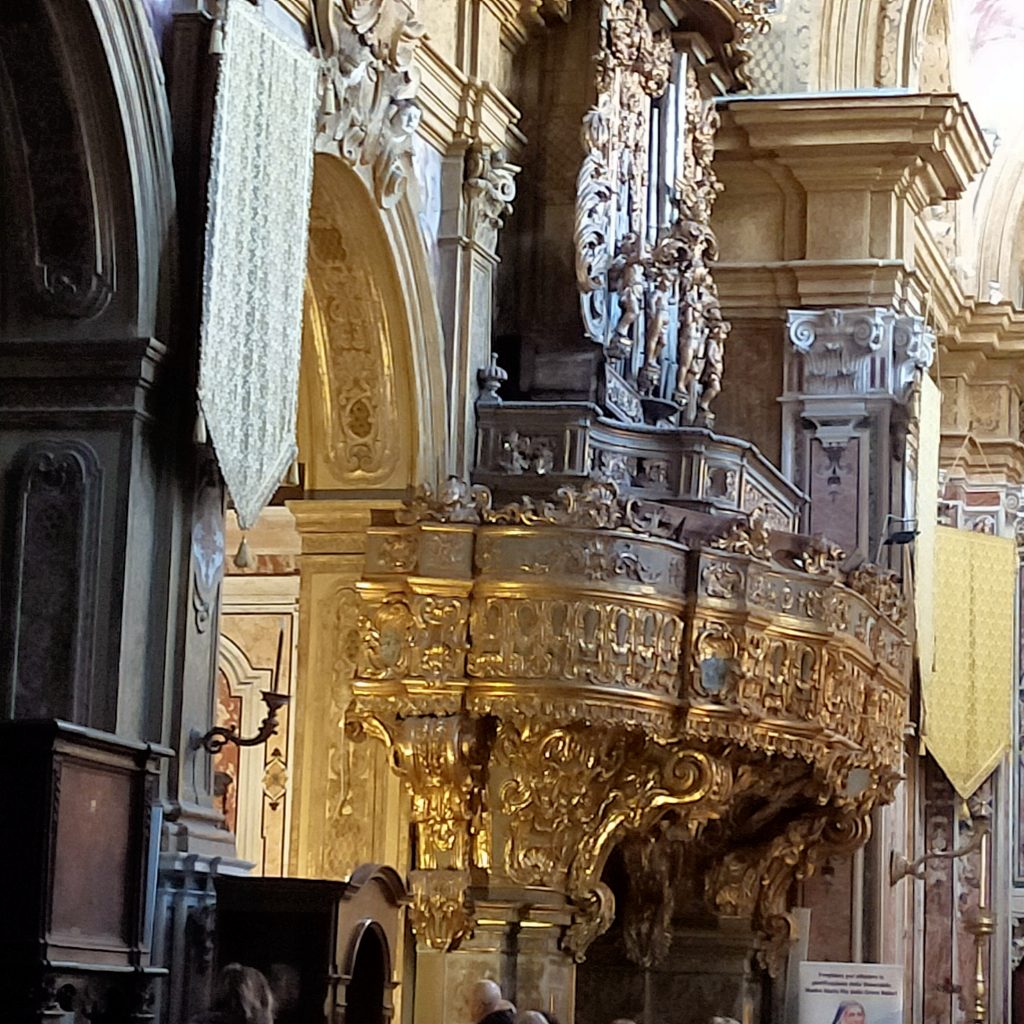
MYTH
Demeter was the mother of Persephone who one day was sucked out of the earth by Hades’ desire. The nymphs who were with her maiden informed her mother of her abduction so Demeter began to look for her. She also asked the handmaids for help, among whom was Parthenope, who, lighting the way with torches, helped to look for the girl. Failing to find it, the goddess gave birth to the greatest famine that humanity had ever known. Finally, Zeus revealed to her that it was the god of the underworld who had kidnapped her. And he interceded for Hades to bring her back. But before letting her go, the god of her underworld made Persephone ingest three pomegranate seeds, sealing their relationship and thus forcing her to spend three months a year with him. Every time Persephone returned to her husband, the earth became arid, only to flourish again when the girl embraced her mother again.

